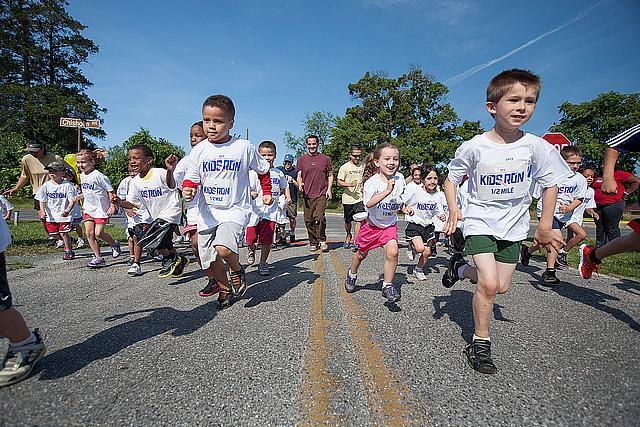Preschoolers may be lumps on a log, but we’ll need more than this study

What preschoolers aren't doing, according to recent headlines.
You might’ve scanned some of the headlines earlier this week in response to a new study published online by the journal Pediatrics on Monday.
“Preschoolers not getting enough physical activity in child care,” CBS News said, while Reuters played it softer: “Physical activity time in preschools may be less than ideal.” USA Today’s headline writers showed less restraint: “Preschool kids starved for exercise.”
The observational study these headlines are based on involved 98 children at 10 childcare centers in the Seattle area. The study tells us that the centers were selected from a convenience sample (rather than a random sample), and the summer months were excluded. Researchers observed the kids’ daily activities for at least four days per center.
Based on those visits, researchers report that the kids in the study aren’t getting the suggested daily levels of exercise. “Compared with the recommended 120 minutes per day of physical activity time, our average of 48 minutes per day of active play opportunities is considerably suboptimal,” the authors write. “These findings highlight the continued disconnection between physical activity recommendations and actual practices in early learning environments, which results in undesirable levels of sedentary behavior and physical activity.”
That may all be true, but based on the headlines that resulted, you’d think the media was reporting on a national survey of preschool activity levels. The point here is not that the study is wrong — just that there are some limitations as to what you can claim on its behalf. The researchers themselves, by the way, are completely upfront about this in the study itself:
(T)his study was conducted at a limited number of licensed child care centers within one geographic area and therefore has limited generalizability to other child care settings and geographic regions.
That part didn’t seem to make it into the coverage. While it’s entirely plausible that the experience of these 10 Seattle child-care centers is in lockstep with a national trend, it’s also possible that other factors — sampling methods, geographic variability, Seattle rain — could influence the results. Several of the stories tell us about growing childhood obesity levels, but they don’t bother to say how activity levels among these Northwest preschoolers compare to, say, preschoolers in Arizona or Florida, or whether the children studied were obese. (Other studies could’ve provided relevant context for comparisons.)
That’s a common problem with news reports on primary research: Too often a study’s carefully qualified findings are generalized, while the study’s limitations – acknowledged or otherwise – don’t make the cut. Caveats might not make for thrilling copy, but they’re an essential part of good health reporting.
If you’re looking for some smart examples of stories covering studies, Harvard’s Shorenstein Center on Media, Politics, and Public Policy just published a helpful list of “good examples of using scholarship as a basis for reporting.”
And, of course, Gary Schwitzer’s HealthNewsReview.org offers a veritable graduate seminar in the many ways health stories get it wrong and right. Reading these critiques will make your stories better, largely by instilling a salutary level of midnight paranoia over whether your copy can endure such scrutiny.
[Photo by Fort George G. Meade Public Affairs via Flickr.]

